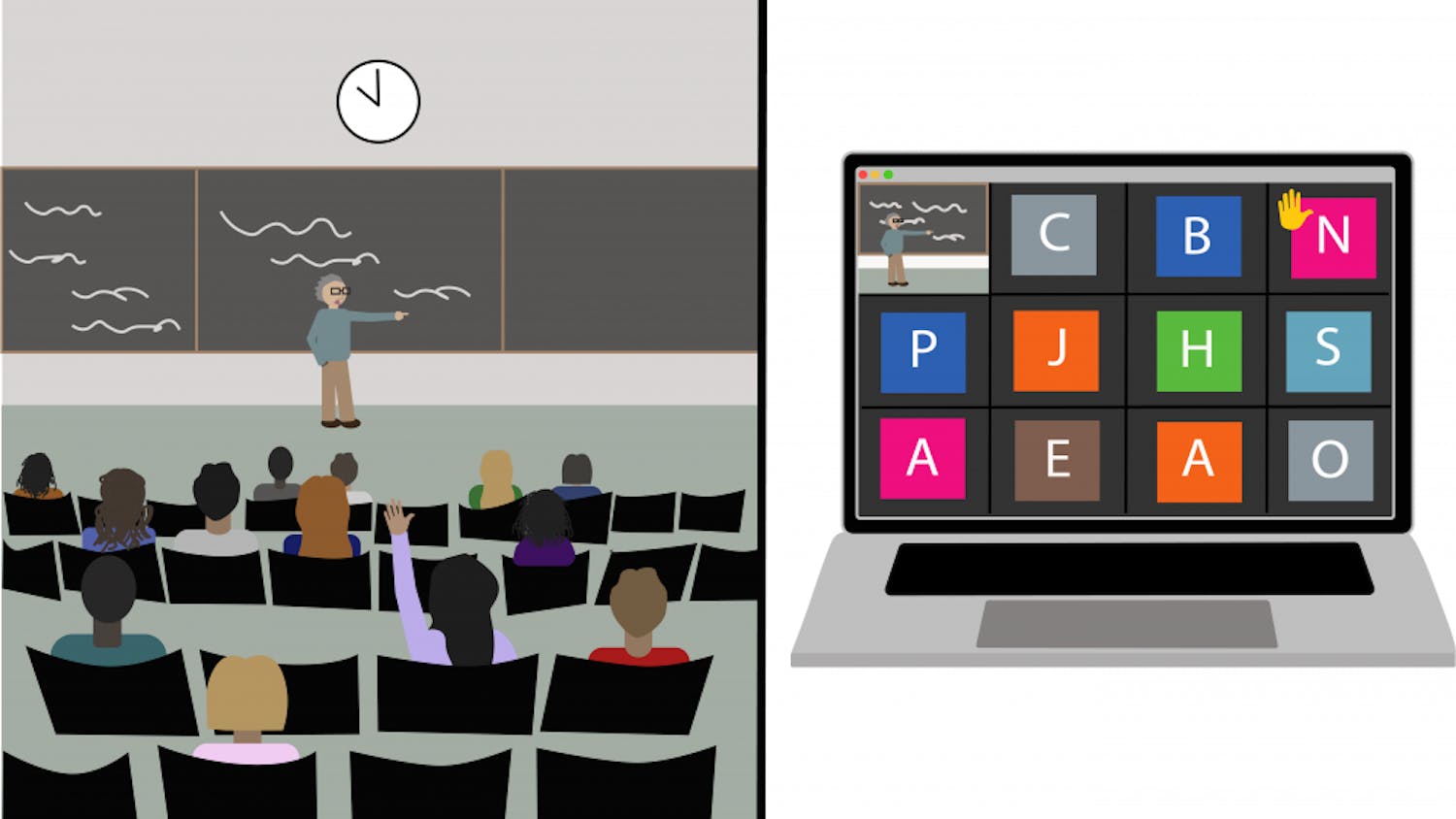Amidst the rise of "Dancing with the Stars" and the acceptance by the Olympics committee of DanceSport as a recognized competitive event, ballroom dancing has exploded in the popular consciousness and created debate about its legitimacy as a sport. To members of Brown's ballroom dancing team, it's obvious which side to take in this debate.
"I think it should be a competitive sport," said co-captain Jennifer Kuo '07. "It's like figure skating in that it requires athletic ability but also the expression of an artistic side."
Skeptical? Try this: Put on some music. Take your first step forward, transferring the weight on your heel to the ball of your foot. Rise onto your toes at the end of the first beat and through the second and third beat. Lower your foot back down at the end of the third beat and continue to do this for the remainder of the song.
This is the rise and fall of the foot pattern in a waltz. The other 19 dances the squad knows are perhaps even more complicated. The diagrams for which foot goes where and which toe does what at each beat of the music are just as intricate as any football or basketball playbook. Ballroom dancers must possess coordination, physical prowess and the ability to execute many different routines in many different dance denominations.
"It is just as much of a sport as gymnastics or figure skating because of how you grade it and how physically taxing it is," said co-captain Dina Tsukrov '08.
Since it was started in 1991 with eight members, the ballroom dancing club has expanded to include 180 members. The team is now headed by a world-champion dancer from England, Russell Monk.
The team participated in its largest competition of the year last weekend, the Harvard Invitational Ballroom Dancing Competition, one of four meets the team will travel to this semester. The event featured 1,000 dancers from 41 different schools competing in five levels - newcomers, bronze, silver, gold and open - of 19 different dances.
"The atmosphere is really competitive. We spend a lot of time practicing and preparing," Tsukrov said.
Competitors are eliminated from each event over the course of several rounds, so the winning teams can repeat the same dance as many as six or seven times.
Dances are divided into American style and International Style, which differ in technique and step patterns. Under American style are the standard and Latin styles of dance. Under the International style are the Smooth and rhythm dance styles.
The standard and smooth include dances like the waltz, tango and foxtrot. The rhythm and Latin include dances such as the cha cha and rumba. Each routine lasts from 70 to 100 seconds. Dancers can be disqualified if they dance "out of syllabus," meaning that if they are in the Bronze category, the dancers must use the steps from the Bronze syllabus only.
While the Brown squad brought a whole contingent of members, among the few highlights of the competition were the performances of several of the team's elite dancers. Alexandra Lubensky '09 and Sandy Trinh '09 came in fourth in the bronze international cha cha. Hans Sprecher '08 and Wen-Chuan Dai '06 finished fourth in the silver American rumba/cha cha. Michael Graves '06 and community member Lyuda Latanas danced to a sixth-place finish in the Gold American bolero/mambo, while Alex Vasserman GS and Masha Pindrus of Tufts came in fifth place in the Gold international Viennese waltz.
The team practices five nights a week, but its mission statement is clear: "The number one goal of the (ballroom dancing) team is to spread the love of dancing." Along these lines, one practice pairs veteran competitors with newcomers.
"At Brown we focus on social dancing and interacting with the community," Tsukrov said. "At schools like Tufts and Harvard, they work with one or two partners all year, so they only learn to lead and follow one person. But we switch partners every dance so that we learn to dance with a whole spectrum of people. We didn't always do well in competitions because of that, but now almost everyone gets into at least one final (round in competition)."




